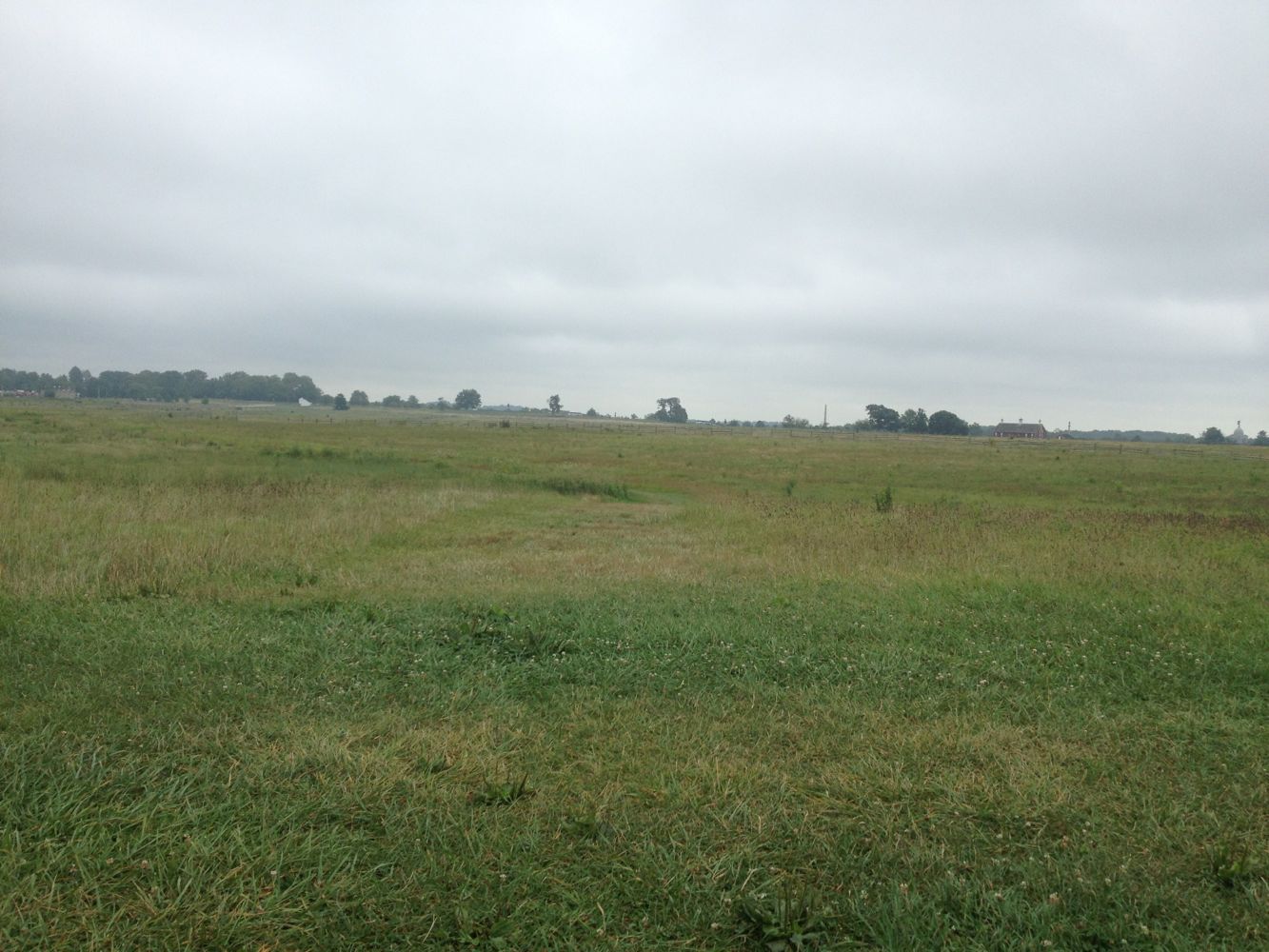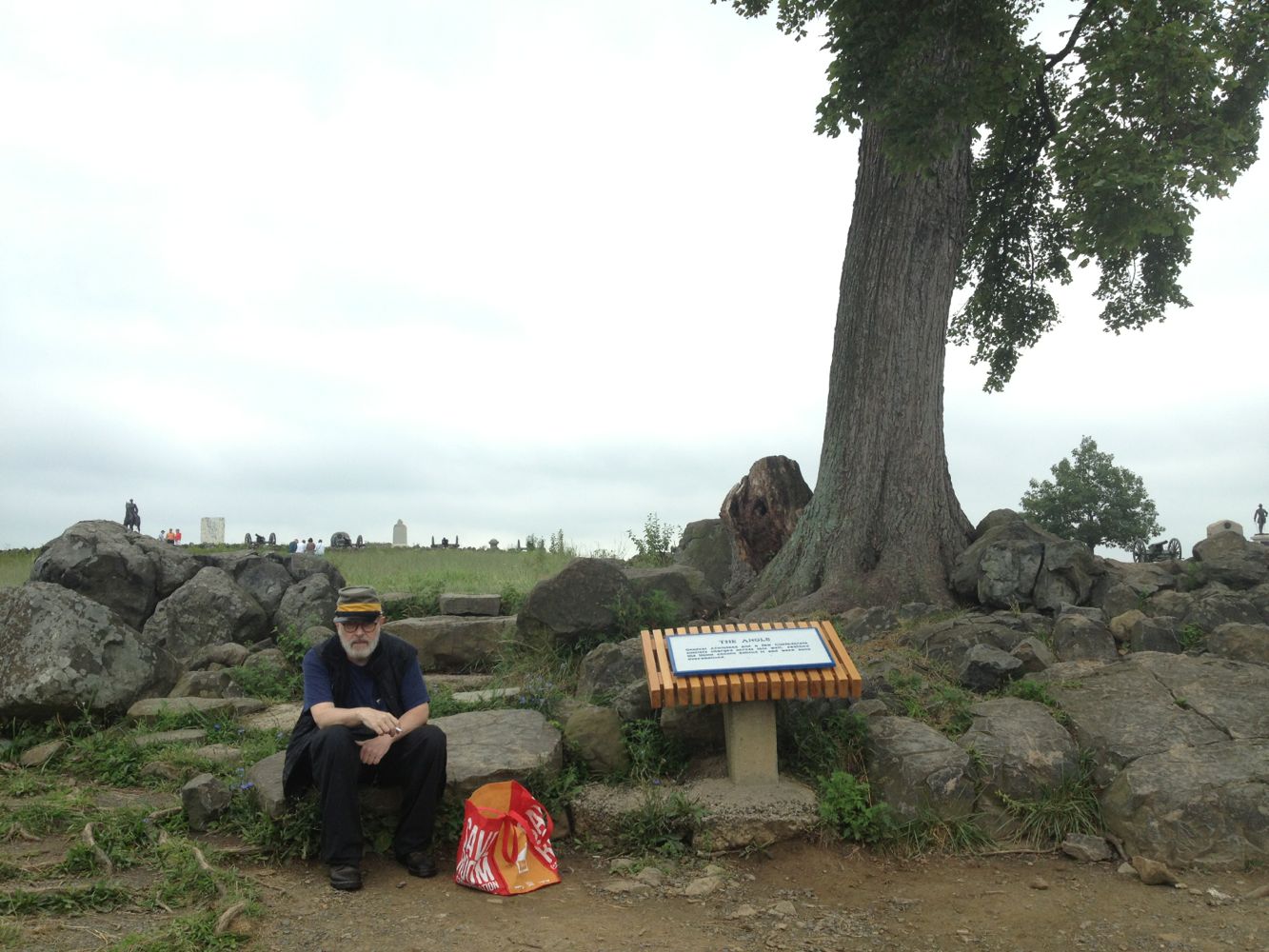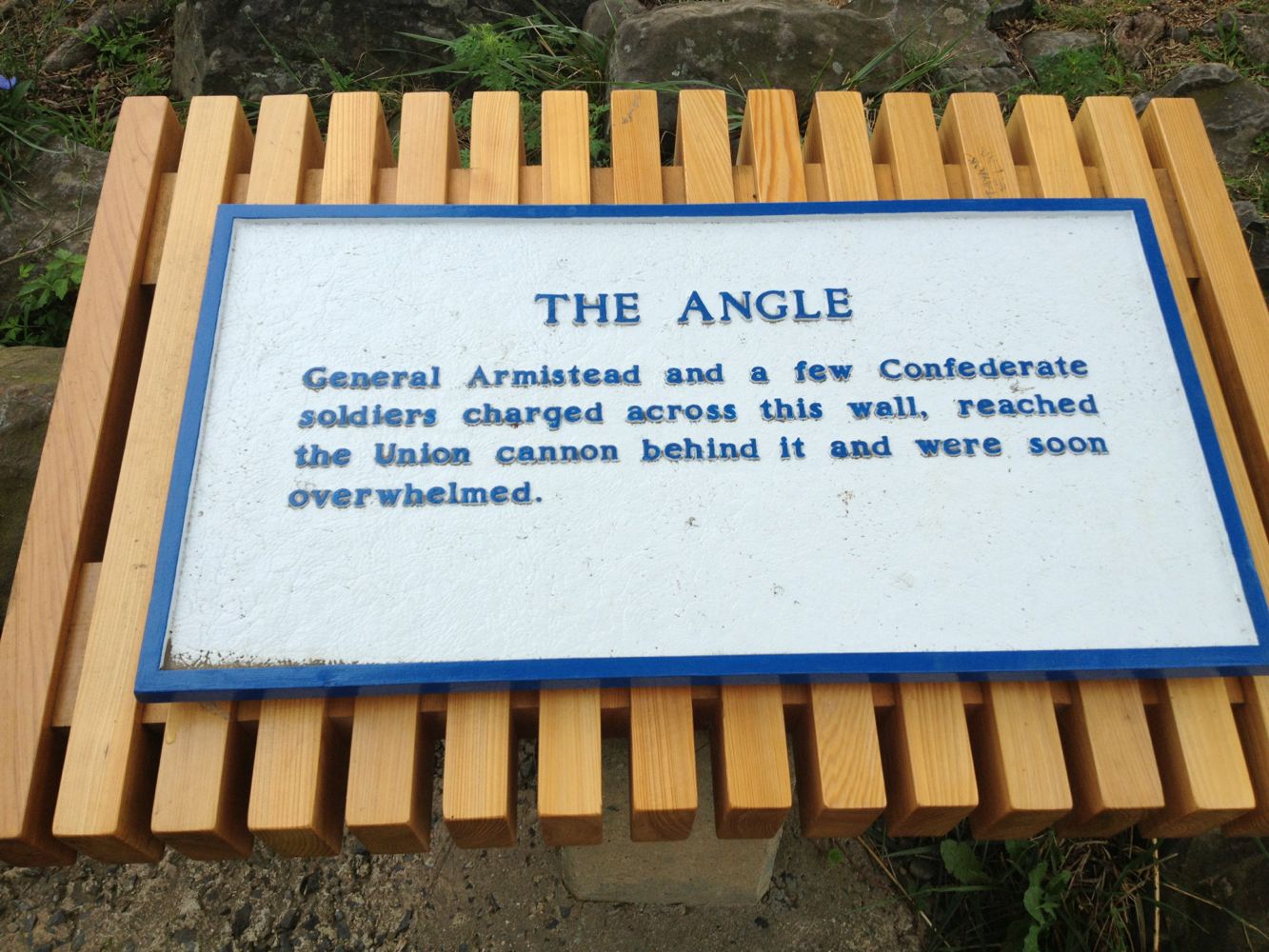This is one of the saddest, most haunted pieces of ground in America — the site of an ill-considered, doomed military gambit by a man who had never made such a gambit before. After failing to turn the flanks of the Union line on the first two days of the battle of Gettysburg, Robert E Lee decided to try and break its center, sending 10,000 men against it over fields dominated by cannon and muskets on a low ridge. It was the sort of tactic his opponents had tried against him on many occasions, always ending in failure.
[The photo above looks from just in front of the Confederate line towards the clumps of trees that marked the center of the Union line.]
Lee seems to have engaged in an act of magical thinking, believing his men could do anything, but a look at the ground they had to cover suggests that this mission was one no men could ever have have accomplished. Lee’s reliable subordinate James Longstreet knew they would fail, though he couldn’t convince Lee of this, and had to fight back tears when he ordered Pickett to lead them forward.
Very few of the 10,000 got anywhere near the Union line. Many turned and ran before they got halfway up to it. A few Virginians got past the line of infantry on the ridge and up to the cannons, where they were slaughtered.
If the charge had broken the Union line, there would have been little opposition left between Lee’s Army and Washington itself. There is a high probability that the North would have sued for peace in the wake of such a catastrophe. But the catastrophe was Lee’s, for which he took full responsibility. He rode among his retreating troops, telling them, “It was all my fault. You did all you could do. Now you must help me save the army.”
The army was saved, but the cause was lost — not before legions more were slaughtered. The fields where the charge was mounted are filled with ghosts today, the ghosts of sacrificed men, of useless courage, of vain glory. In the end it was all for the best — slavery died in the failure of Pickett’s charge, and the Union was preserved — but the melancholy echoes of that afternoon of 3 July 1863 abide forever, part of the earth itself in that grim place.
Click on the images to enlarge.




